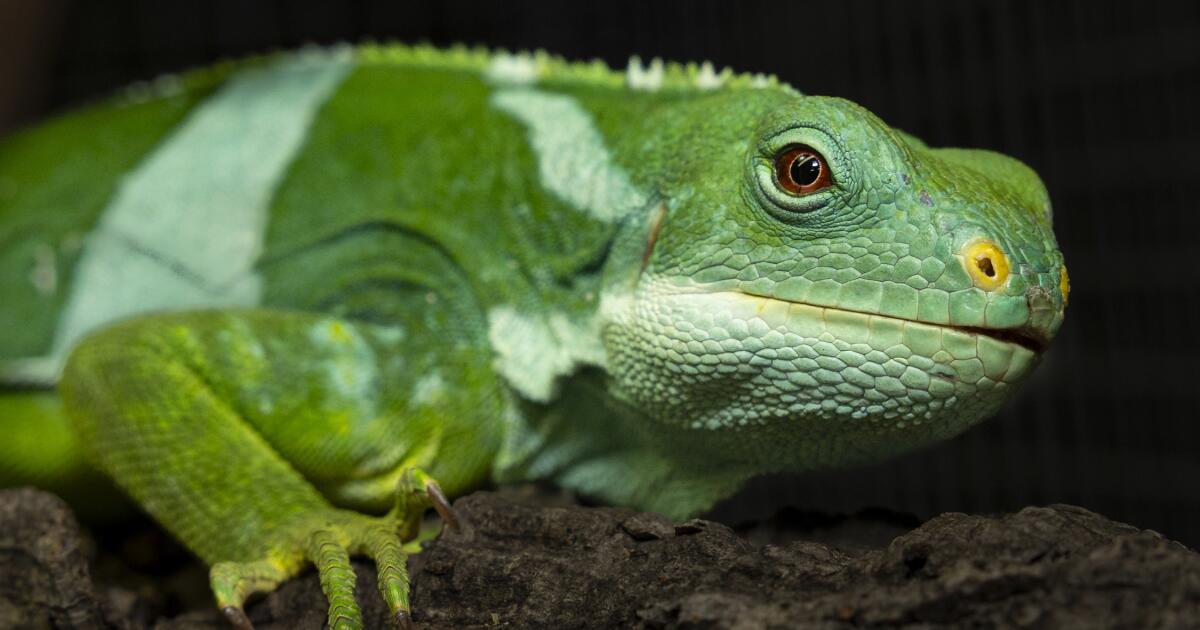Now Reading: Rare Fijian iguanas, rescued from wildlife traffickers in Spain, arrive at San Diego Zoo
-
01
Rare Fijian iguanas, rescued from wildlife traffickers in Spain, arrive at San Diego Zoo
Rare Fijian iguanas, rescued from wildlife traffickers in Spain, arrive at San Diego Zoo

After a whirlwind global journey that involved being captured, rescued, and isolated, eight critically endangered Fijian iguanas have finally reached their new residence at the San Diego Zoo. Officials stated that the iguanas will blend in seamlessly at the zoo, which boasts the largest captive group of these reptiles and is at the forefront of genetic research efforts aimed at aiding their survival in the future.
Zoo personnel were excited to welcome the long green newcomers, which were confiscated by Spanish authorities during a 2017 operation targeting over 600 illegally trafficked reptiles. Brett Baldwin, the curator of herpetology and ichthyology at the San Diego Zoo, emphasized the frequency of wildlife trafficking incidents and the particular vulnerability of reptiles due to their high demand in the illicit pet trade.
The transfer of the Fijian iguanas from Spain to the San Diego Zoo was a lengthy process but underscores the institution’s dedication to wildlife conservation and ensuring the iguanas receive optimal care. The move was approved by the Fijian government as part of a global initiative to aid in the restoration of the endangered species.
Setoki Tuiteci, Chairman of the National Trust of Fiji Council, acknowledged the threat posed to Fiji’s endangered iguana populations by wildlife smuggling and commended the efforts of security authorities and organizations like San Diego Zoo Wildlife Alliance. The zoo’s conservation breeding program, initiated in the 1990s, has successfully bred over 100 hatchlings, contributing to the preservation of the species.
San Diego Zoo Wildlife Alliance has been involved in over 20 reptile seizures in the past 28 years and was among the first to receive Fijian iguanas. Through DNA analysis of samples from nearly 200 iguanas across 30 islands, the zoo aims to enhance its conservation strategies and potentially identify a new iguana species based on the genetic diversity observed in native Fijian iguana populations.
The zoo’s geneticists will collaborate with the new iguanas to determine their origin, whether they were poached from the wild or illegally bred, and potentially identify their original island habitat. Fijian iguanas inhabit about 10% of Fiji’s approximately 330 islands, with most populations under threat. These lizards, about 21 inches in length, primarily consume leaves, fruits, and flowers in the coastal swamps and rainforests of their natural habitat, spending much of their lives in trees and descending only to lay eggs.






